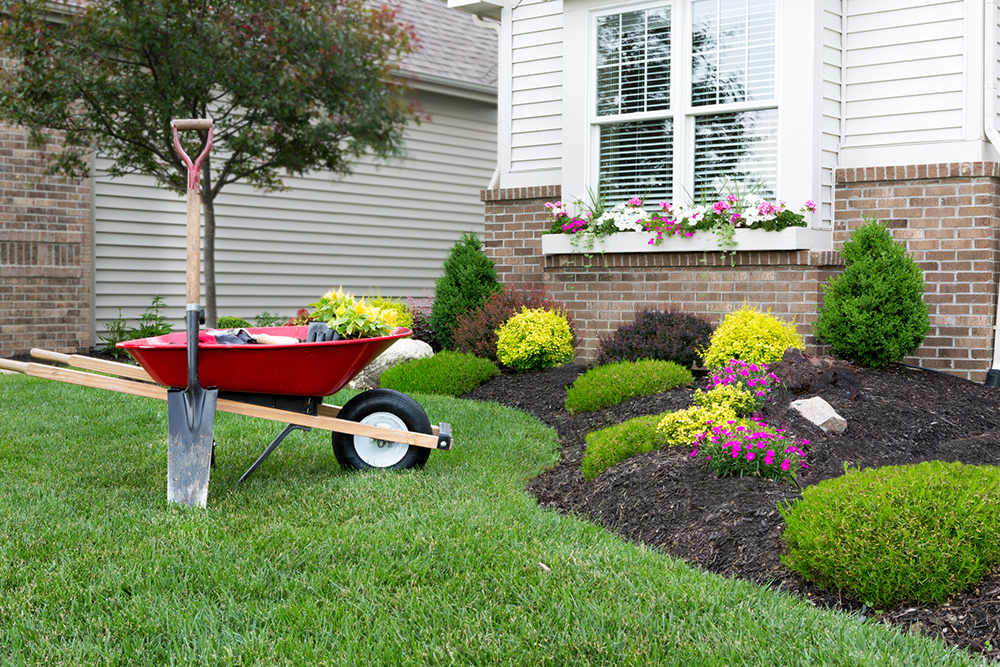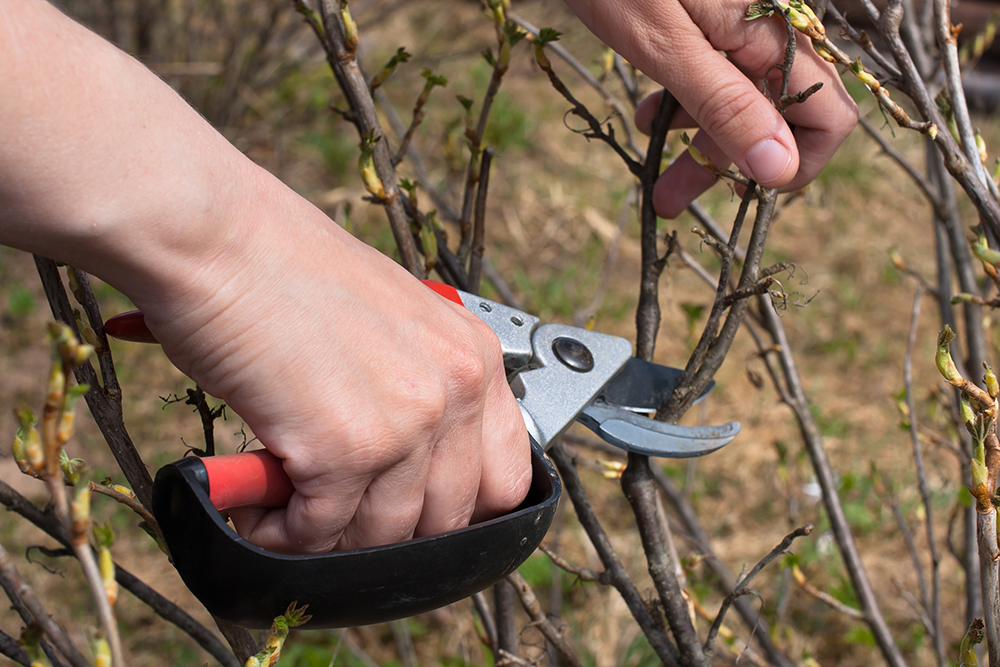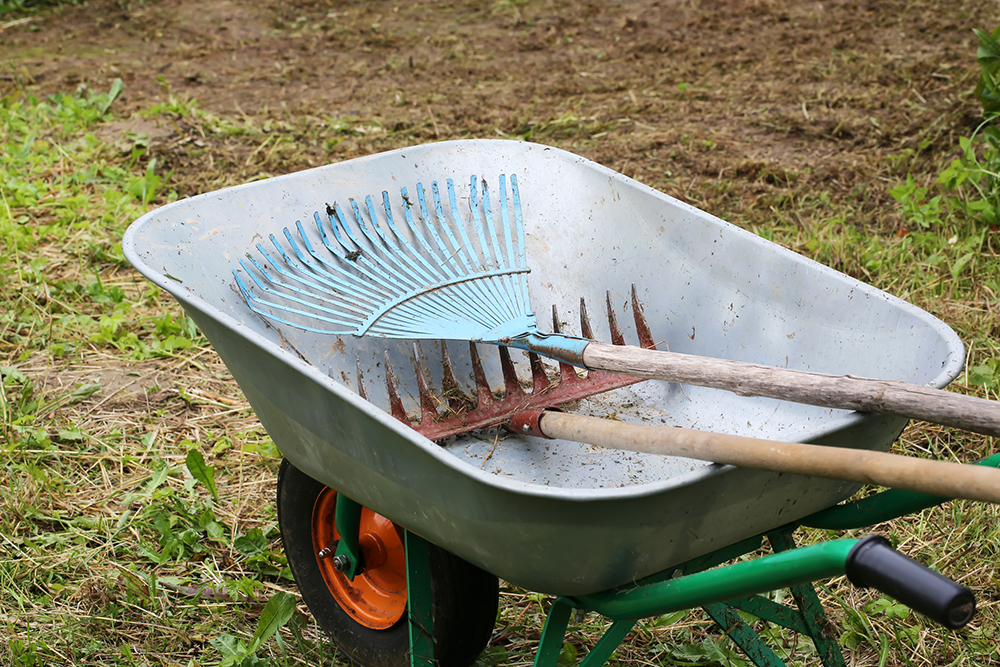Now that we’ve gotten halfway through winter and the daylight hours are increasing, our thoughts are turning to the approaching spring season. You might be starting some seedlings indoors or planning for a garden expansion or landscaping overhaul using some online planning tools.
We figure it’s never too early to share some DIY gardening tips for beginners and veterans alike.
This month, we’re focusing on gardening tools. Here are a few suggestions and tips for selecting the right tools and getting the most out of each one.
Use the Right Tools
There’s a reason we put this tip first. It’s important. Besides your hands and maybe a decent pair of gardening gloves, there are a few fundamental tools that can make quick work of most projects.
 Spade and Shovel
Spade and Shovel
Although these terms are sometimes used interchangeably, they are different tools, each with its own set of unique capabilities. But both are foundational to your gardening toolbox. A spade tends to have a shorter handle and their flat blade makes them great for digging trenches, edging, and cutting into sod. A shovel has a longer handle, helping with leverage when digging holes and lifting soil. Its pointed blade helps with breaking materials apart as well.
Garden Trowel
This tool is a handheld version of a shovel, that allows gardeners to scoop and move smaller quantities of earth with more precision. Great for planting seeds, seedlings, and small plants. And great for potting and re-potting as well.
 Hand Pruners or Secateurs
Hand Pruners or Secateurs
You’ll find that this is one tool that gets used often, spring, summer, and fall. Used for trimming soft stems and woody branches up to about a half inch thick, they’re perfect for trimming shrubs, hedges, bushes, and small trees. They also come in super handy when trimming everything back during fall clean-up.
Hoe or Cultivator
Like the garden rake, a hoe is also good for breaking up soil clumps, as well as moving and leveling it out. The smaller width and solid working surface means it can fit in tight spaces and move earth and mulch more efficiently.
Leaf and Garden Rakes
When you think of a rake, you probably think of the upside down fan-shaped leaf rake. Of course, these are a must-have for homeowners with any size of lawn. There’s just nothing that compares when trying to gather fallen leaves, sticks, and other debris on grass.
 A garden rake on the other hand, is a bit heavier and has one flat row of short steel tines. If you want to transfer, level out, and/or comb through soil, this is the device for the job. Other types of rakes include the hand rake, shrub rake, and thatch rake – all nice to have as well, but we wouldn’t consider them fundamental.
A garden rake on the other hand, is a bit heavier and has one flat row of short steel tines. If you want to transfer, level out, and/or comb through soil, this is the device for the job. Other types of rakes include the hand rake, shrub rake, and thatch rake – all nice to have as well, but we wouldn’t consider them fundamental.
Wheelbarrow or Garden Cart
While it may take up a bit of room in your garage or shed, a wheelbarrow or garden cart is indispensable when you need to move large, heavy plants, shrubs, and materials around your yard. If you’re short on storage space, there are garden carts available that can be folded down to a fairly compact size when not in use.
Of course there are a plethora of additional and more specialized gardening tools and gadgets that are nice to have. A few we’d recommend in addition to the above tools are:
Lopper – for trimming and pruning thicker, woody branches
Edging Tool – you can edge a garden with a shovel, but this purpose-built tool does a much nicer job
Rain Gauge – such a simple tool that helps keep you from over- or under-watering
Soil Knife – has multiple purposes, from quick weeding and trimming, to cutting sod and dividing plants
Pitch Fork – great for moving mulch; like a pitch fork but with more tines that are more closely spaced
Clippers – great for shaping hedges and trimming excess growth
When you’re selecting tools, you don’t have to buy the most expensive of everything. Keep in mind though that you generally get what you pay for. So, if you don’t want to replace your tools every season, invest wisely and clean, maintain, and store them properly. Finally, it’s best to use tools for their intended purposes only to help avoid breaking them or injuring yourself.
Of course, if you find you lack the tools, time, or expertise to add landscaping or manage your existing lawn and garden, contact us to discuss how we can help.
